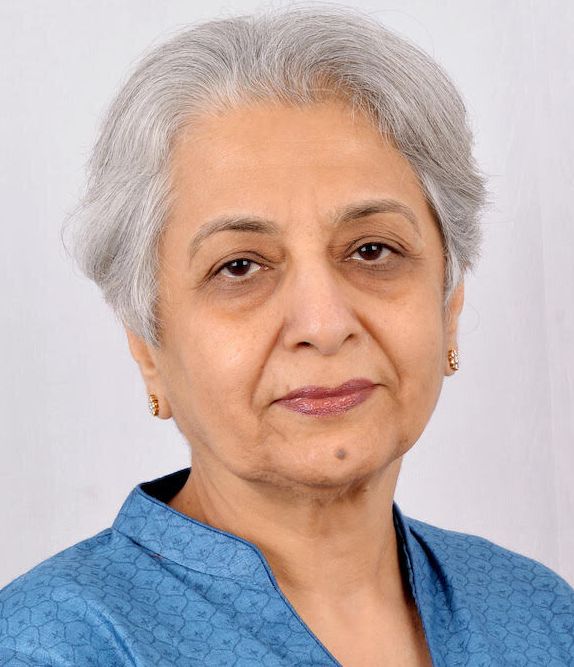
The shortlist of the 2020 edition of the Kamaladevi Chattopadhyay NIF Book Prize was announced on Monday. In an email interview, jury chair Prof. Niraja Gopal Jayal, a political scientist and academic, spoke about how the shortlist was chosen, why accessibility is important, and the ways in which non-fiction writing in India has been changing over the years.
The books on the shortlist range from an investigation into the generic drug industry to an academic study on the political mobilisation of marginalised groups in India. As judges for a non-fiction book prize, do you try to balance the book’s merits with accessibility for a wider audience?
‘Non-fiction’ is a label that encompasses multiple genres, and the prize is eclectic about genres so long as the books that are submitted meet the basic criterion of being about modern/contemporary India. Accessibility for a broader audience is definitely an important consideration. If you look at the winners of the 2018 and 2019 prizes, both are crossover books, written by academics but hugely accessible not just in the quality of their writing, but also in the appeal of their themes. So yes, accessibility for a wider audience is certainly something we consciously value.
What is the thought process that went into choosing the shortlist? Do the jury members agree on, say, a common intellectual trend to look for before beginning the reading?
Arriving at a shortlist from a first-rate longlist necessarily entails tough choices. But the choice is not prejudiced by the search for “a common intellectual trend,” else you wouldn’t have the variety and range that the list has. The excellence of the books, both within their genre and across genres, is the main thing. Of course, a book that is a first on a particular topic or a major intervention in an under-researched field or one that provides a fresh perspective on an issue does stand out.
How do you view the changing landscape of nonfiction writing in India?
It is actually rather striking how much the field of non-academic non-fiction writing has expanded in the past few years. This points to an increasing readership for such books, and in fairly diverse areas: politics, history, economics and biography. Take politics. A larger number of books on electoral politics was published in the run-up to the general election of 2019 than any previous election in India.
Similarly, there have been more biographies written in recent years than for many years before that, and even these aren’t nearly enough. For a long time, the genre had been consigned to officially sponsored series of the Builders/Makers of Modern India type. In the last few years, we have seen many trade publishers bringing out well-researched, well-written and well-received biographies of important figures not just in modern India, but also mediaeval India. In the last five years alone, there have been multiple books on various Mughal emperors and rulers of kingdoms in the Deccan. Clearly, non-fiction writing and publishing have begun to thrive and that they have found an eager readership is something to be pleased about.
“There have been more biographies written in recent years than for many years before that, and even these aren’t nearly enough. For a long time, the genre had been consigned to officially sponsored series of the Builders/Makers of Modern India type.”
You have been in academics for over three decades now. What difference would a prize like the one you’re judging have made to young academics of your generation?
Academics have to write primarily for a scholarly audience, since peer recognition is the path to achieving professional standing. Not every academic work can appeal to a non-academic readership; much depends on the subject of the research and the way in which it is approached and written about. Overseas, professional associations (like the American Political Science Association or the Association of Asian Studies) annually recognize and reward the best dissertation or the best book in multiple sub-fields of a discipline. That phenomenon does not exist in our country, so a prize like this should certainly be a draw. I hope that in the next few years we will see more submissions from young Indian academics.
Non-fiction prizes, while rare in India, are still heavily geared towards social science writing. Are there attempts to widen the ambit of the prize to find writers outside this space?
The ambit of the prize could not be wider – it is self-consciously open and eclectic across genres. This year’s shortlist, for instance, has only one book that is technically a work of social science and two works of history apart from a few other genres.
Also, the jury picks from among the nominations received from publishers, so there is no scope for ‘finding’ writers. However, this is something that the flagship activity of the New India Foundation – its fellowship programme – does very well. The Foundation’s fellowships have resulted in the publication of a large and very diverse array of high-quality books, which actually provide a model for wide-ranging non-fiction writing. Our Fellows’ books are of course ineligible for the Kamaladevi Chattopadhyay prize, but their range and diversity make them exemplars for such writing, and will hopefully encourage more writers and scholars to write engaging non-fiction works of quality.
“I hope that in the next few years we will see more submissions from young Indian academics”